So you wake up the morning after your rhinoplasty. Maybe you’re a little groggy still. You shuffle to the bathroom and catch your reflection.
Yikes.
The person staring back looks like they went three rounds with a heavyweight boxer—swollen eyes, a splinted nose, bruising that definitely wasn’t there yesterday. It’s jarring. Even when you knew it was coming, seeing it is different.
But here’s what I wish someone had told me when I was researching this: your recovery is going to follow a pretty predictable pattern. Knowing what’s supposed to happen—and when—can save you from those middle-of-the-night panic internet searches and anxious texts to your surgeon’s office.
I’m going to walk you through exactly what happens during each phase of healing, from the day of surgery all the way to your final result. You’ll know what’s totally normal, what needs attention, and when you can finally stop sleeping like Dracula in a coffin (propped up at a weird angle, I mean).
What Makes Rhinoplasty Recovery Unique
Here’s the thing about rhinoplasty recovery—unlike getting your breasts done or a tummy tuck, you can’t hide this under clothes. Your face is right there. It’s the first thing anyone sees when they look at you, which makes the whole swelling-and-bruising situation feel extra intense for a lot of people.
And that’s just the cosmetic side. There’s also the functional part: you can’t really breathe through your nose for the first several days. You’re basically a mouth-breather, which sounds minor until you’re trying to sleep or eat or just exist comfortably. (Trust me, you’ll miss nose breathing more than you’d think.)
Understanding both sides of this—how you look and how you function—helps keep expectations in check.
Your recovery time depends on a bunch of factors. If you had open rhinoplasty (where they lift the skin off your nasal framework), you’ll typically swell more than with closed rhinoplasty. The extent of what was done matters too—someone getting just a little tip work will bounce back faster than someone who needed major reconstruction.
Your age, health, how thick your skin is, even your genetics… all of it plays a role in how fast you heal.
Day 1: Surgery Day and Immediate Aftermath
The first thing you’ll notice when the anesthesia wears off? Pressure.
Not the sharp, stabbing pain you might be dreading—most people say it feels more like a tight, heavy sensation across your nose and cheeks. Your surgeon will send you home with pain meds, though honestly, a lot of folks only really need them for the first night or two.
Your nose will be covered with an external splint (usually plastic or plaster) taped to your face. Depending on what your surgeon prefers, you might also have internal packing—think cotton-like material stuffed inside your nostrils—or soft silicone splints.
These keep everything in place while early healing happens. If you’ve got packing, breathing through your nose is a no-go. With silicone splints, you might get a little airflow, but I wouldn’t call it “breathing” exactly.
You’ll also have drainage. They’ll tape a small gauze pad under your nose (called a drip pad) to catch blood and fluid. It’s totally normal. Kind of gross, sure, but normal. Just change it when it gets saturated.
Swelling starts right away, though on day one it’s usually pretty subtle. By evening, you’ll see some puffiness around your eyes and cheeks. This is why elevation is your most important job today. Sleep propped up on two or three pillows—or if you’ve got a recliner, even better. Gravity’s working against you here.
Ice is your new best friend. Put cold compresses around your eyes and on your cheeks (not directly on the splint or nose itself) for 20 minutes every hour you’re awake. This one thing does more to reduce swelling than anything else in your arsenal.
As for food? Don’t plan on much. Between mouth breathing, feeling kind of wonky from anesthesia, and just general discomfort, most people stick to easy stuff—smoothies, soups, yogurt. Nothing that requires serious chewing.
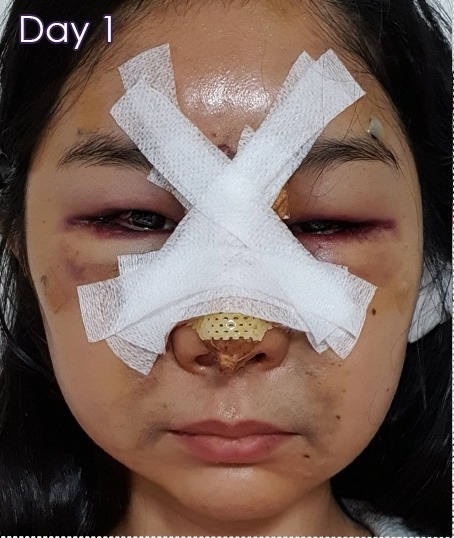
Days 2–3: The Peak Swelling Phase
Day two is usually when things look… worse. You’ll wake up more swollen than the night before, and yeah, it can be a little alarming. Your eyes might be so puffy they’re half-closed. You look like you lost a bar fight.
But here’s the thing—this is completely normal. It’s actually a sign your body’s doing exactly what it’s supposed to do after surgery.
Bruising shows up around day two or three. It usually starts near your eyes and creeps down to your upper cheeks. The colors range from deep purple to almost black-blue.
If you have thin skin or bruise easily (you know who you are), you’ll probably get more dramatic discoloration. Some people barely bruise at all. Neither situation tells you anything about how your nose will turn out—it’s just how your body reacts.
The mouth breathing gets really old, really fast. Your throat’s constantly dry, and you’ll probably wake up multiple times at night feeling like you’ve been wandering in a desert. Keep a water bottle at your bedside. Sip all the time. A humidifier in your room is a game-changer.
You’ll also feel tired. Like, really tired. Between the lingering anesthesia effects, pain meds, terrible sleep, and your body working overtime to heal, you’re going to be wiped out.
This is not the moment to power through. Your only job right now is resting.
Keep up with the ice and elevation routine. I know it’s annoying, but patients who stick with it religiously tend to have way less swelling by the end of week one compared to people who get lazy about it.
Some people get nauseous on day two or three—usually from the pain meds. If that’s you, call your surgeon about switching to something else. Taking the medication with food helps too, even if you’re not exactly hungry.
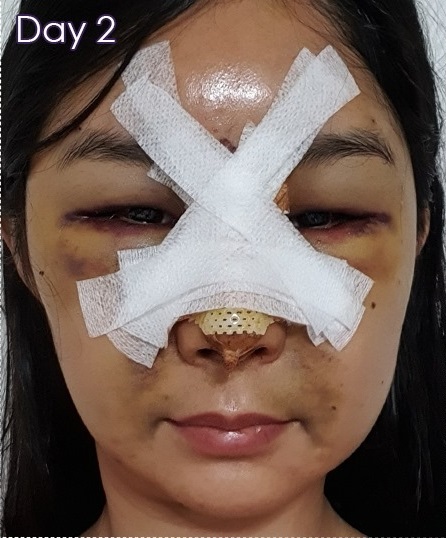
Days 4–5: Turning the Corner
Around day four, something shifts. You can feel it.
The anesthesia brain fog is finally gone, and while you still look pretty beat up and definitely feel post-surgical, most people say they feel a lot better than they did on days two and three.
Swelling hits its peak and starts—slowly—going down. You might not see huge changes when you look in the mirror, but your body’s busy behind the scenes.
If your surgeon used internal packing, they’ll probably take it out sometime between day three and five. I’m not going to lie—removal is uncomfortable. But it’s quick. And the relief? Immediate.
Pain’s pretty minimal at this point for most people. What’s left is more like tightness and pressure, not actual pain.
You can do a bit more activity-wise, but don’t overdo it. Walk around your house, sit up normally, read, watch TV. What you can’t do: bend over, lift anything heavy, exercise, or strain.
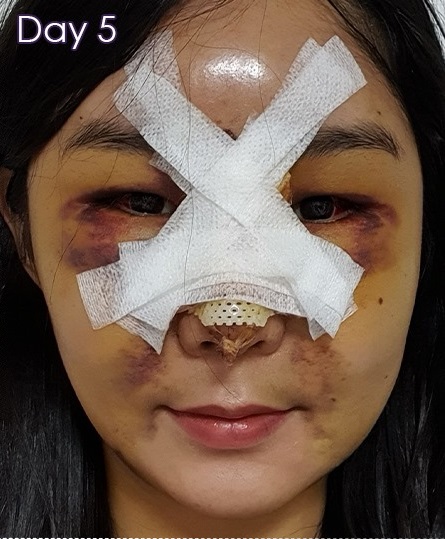
Days 6–7: The One-Week Milestone
Day seven is a big deal—splint removal day for most people.
This appointment usually involves taking off the external splint, any remaining internal splints, and those tiny stitches across the columella (if you had open rhinoplasty).
The splint-removal moment is emotional. You’re finally going to see your new nose! Except—and this is important—you’re not really seeing it yet.
What you see at one week is a swollen, kind of misshapen version of what you’ll end up with. A lot of patients feel disappointed when that splint comes off. The nose looks bigger than they expected. Less refined. But that’s swelling talking, not your actual result.
Your nose feels weird once the splint’s off. Naked. Vulnerable. You’ll be super aware of it and probably paranoid about bumping into things. That’s totally normal.
By the end of week one, your bruising has probably gone from deep purple to greenish-yellow. Not pretty, but a good sign—it means your body’s reabsorbing it.
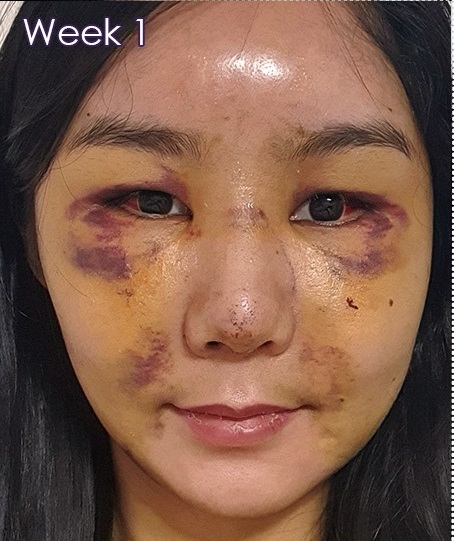
Days 8–10: Post-Splint Adjustment
The first few days after splint removal take some getting used to. Your nose feels strange when you touch it—stiff in some spots, numb in others, weirdly sensitive elsewhere.
Swelling’s still there, though it’s going down every day. The tip looks bigger—it’s the last area to de-swell.
You can finally shower normally. Your surgeon will tell you how to clean inside your nostrils—usually with saline or diluted hydrogen peroxide. Be gentle.
Breathing gets better every single day as the internal swelling goes down.
Most people go back to work or social stuff around days eight to ten. You can cover leftover bruising with makeup, and the swelling isn’t super obvious to others (even if you see it).
Days 11–14: The Two-Week Mark
By day fourteen, you’re in a different phase. Bruising’s mostly gone. Swelling’s way down.
Your nose starts to show more definition. Profile views show the most noticeable difference. A lot of people take their first cautious selfies around now.
You’ll still have numbness and weird sensations. That’s normal nerve healing.
Activity restrictions ease up—light cardio’s okay, but no running, weightlifting, yoga, or swimming yet.
Sleeping gets more comfortable. You can lower your head a bit, though most surgeons still recommend sleeping on your back.
Weeks 3–4: Visible Transformation
By week three, you start looking noticeably better.
Your nose refines itself gradually—less puffiness, more definition.
Weird sensations like itching or tingling are common as nerves heal.
Most surgeons lift many restrictions now. You can resume most exercise except contact sports.
By week four, you’re about 60–70% healed in terms of visible swelling.
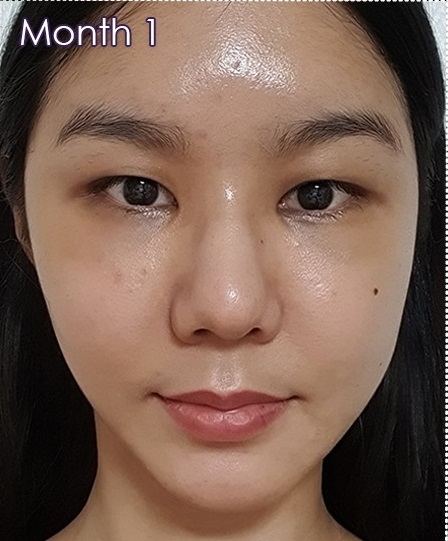
Months 2–3: The Refinement Phase
Between months two and three, your nose gets more defined. The tip looks less bulbous, the bridge refines.
Swelling follows a predictable pattern:
- By 2 months → about 80% gone
- By 3 months → around 90% gone
That last 10%—usually at the tip—takes time.
Breathing keeps improving, especially if functional work was done.
At three months, you can usually return to full activity, including sports.
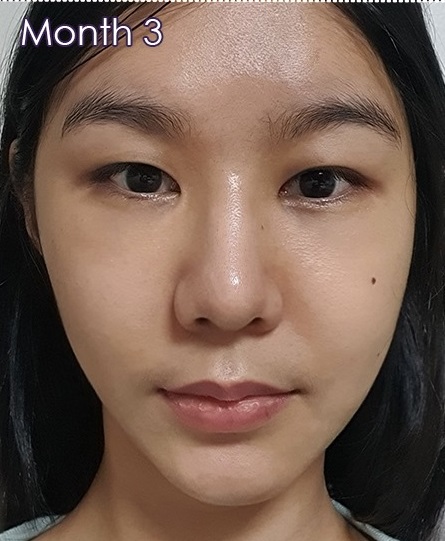
Months 6–12: Final Result Emergence
By month six, about 95% of the swelling’s gone. Your nose looks refined and natural.
Between months six and twelve, subtle refinements continue.
One year marks the official finish line. All swelling’s resolved, and what you see is your true final result.
Most surgeons do a one-year follow-up to assess satisfaction and discuss any concerns.
Critical Recovery Tips for Optimal Healing
- Sleep elevated to control swelling.
- Ice consistently during the first 48 hours.
- Stay hydrated—mouth breathing dehydrates fast.
- Cut back on salt to reduce swelling.
- Avoid nicotine—it restricts blood flow and impairs healing.
- Protect your nose from the sun.
- Don’t rush back into intense activity.
- Be realistic—final results take a full year.
When to Contact Your Surgeon
Call your surgeon or go to the ER if you have:
- Heavy, persistent bleeding
- Fever above 101°F (38.3°C)
- Severe or worsening pain
- Sudden asymmetry
- Signs of infection (redness, pus, worsening swelling)
- Increasing or persistent breathing difficulty
Better to call and get reassurance than to wait and worry.
Understanding Your Emotional Recovery
Physical healing is only half the story. The emotional side matters too.
Many patients feel anxious or regretful right after surgery—“post-surgical depression” is real. You’re uncomfortable, can’t see the final result yet, and look different. These feelings usually fade once swelling subsides and confidence returns.
Some people struggle with attention or comments from others. Decide ahead how much you want to share.
The waiting period between months three and twelve tests your patience. Taking monthly progress photos helps you see subtle improvements.
Your Path to Recovery
This timeline gives you a roadmap, but every recovery is unique. Some people breeze through, others take longer.
What’s true for everyone: healing takes patience.
Follow your surgeon’s instructions, protect your nose, and don’t rush it.
Be kind to yourself—the discomfort and waiting are temporary, but the confidence boost lasts a lifetime.
I knew someone who got rhinoplasty a few years back, and she told me the hardest part wasn’t the pain or swelling—it was the waiting.
But when she hit that one-year mark and looked at her before photos? She couldn’t believe the difference. Said it was worth every uncomfortable day of sleeping propped up like a vampire.
Q: What happens during each day of rhinoplasty recovery?
Days 1-3 after rhinoplasty involve peak swelling and bruising while managing discomfort with elevation and ice. Days 4-7 show improvement, with splint removal at one week. Weeks 2-4 bring dramatic visible improvement and gradual return to activities. By 3 months, 90% of swelling resolves. Final results appear at 12 months when all healing is complete.


